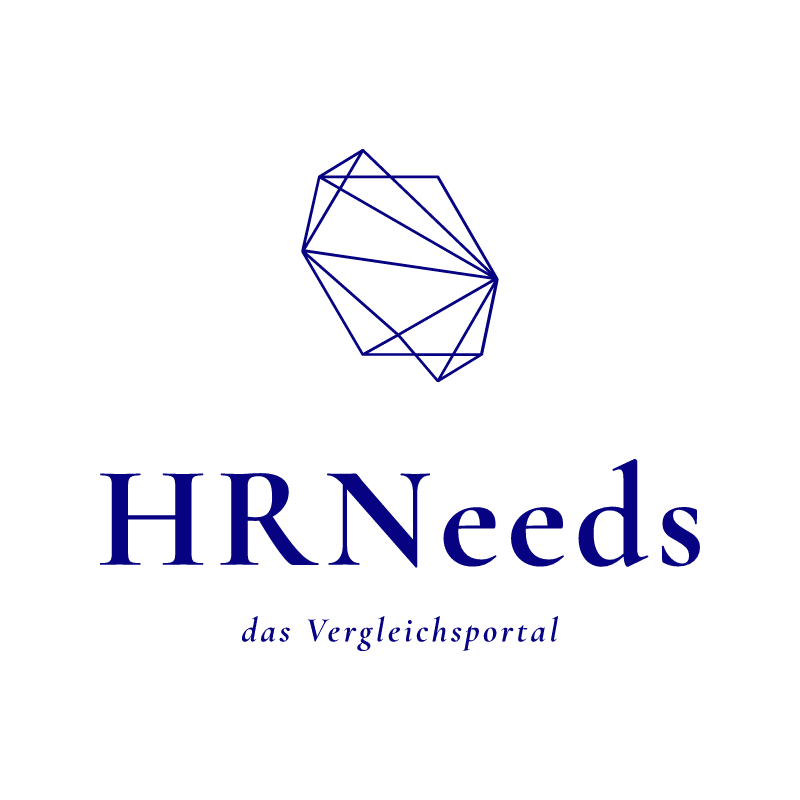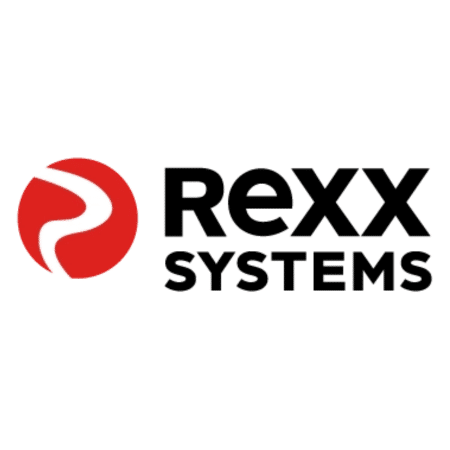Education Management Software compared!
HRNeeds, the comparison portal.
Education ´Management- and eLearning-Software
Versatile and user-friendly training management and eLearning software is the key to an efficient and modern training culture in your company. Digital solutions support the organization of training courses, the provision of learning content and the tracking of progress. At the same time, they promote the motivation of your employees through interactive and flexible learning opportunities. Find out more ↓HERE.
Compare for free & without obligation
to the right software solution from the expert
Education and eLearning: Compare software
We live in the information age. The digital information age is characterized by digital information and communication technologies. Digital technologies are not only having a formative influence on people’s lives, but also on learning and further training in companies. This affects both the content and the forms of learning.
This digital change is also known as the “digital revolution” due to its rapid pace.
The importance of education and knowledge in the information age
The knowledge and qualifications of employees play a decisive role in these rapidly changing times. Change is becoming the norm. What is special about the informational mode of development, however, is the impact of knowledge on knowledge itself as the Main source of productivity.
In this context, it is important to know how knowledge is created in the first place. The knowledge pyramid provides insight into this question. In a nutshell, it shows how information can be generated from raw data. And finally, knowledge.
It is difficult to filter out the information that is actually relevant from the wealth of information that is constantly being created and disseminated via digital technologies and is available to everyone at all times. Sometimes there is already talk of information overload. Selection is needed so that qualified content can be offered. And finally, when it comes to training and educating employees, the knowledge to be imparted must be didactically prepared. Then the courses will have the desired effect.
However, it is also clear in this fast-moving age that the half-life of knowledge is decreasing. Skills need to be constantly adapted and information prepared accordingly. This poses an enormous challenge for the organization of further training and the transfer of knowledge. If a platform is available for this purpose, a Learning Management System, or LMS for short, you have an education management system that simplifies the organization and transfer of knowledge enormously.
Why is further training important?
The desire for lifelong learning should have long been anchored in all of us. Further training is therefore an essential measure that everyone should keep in mind. However, HR managers are also required to qualify their employees in such a way that they can keep pace professionally in order to gain a competitive edge.
The following goals can be achieved with further training:
- Closing skills gaps identified during employee reviews, among other things
- Helping employees remain competitive
- Assuming responsibility to employees and the company
- Retaining talent and high-performing employees
- Increasing employee engagement and satisfaction
What further training measures do my employees need?
The answer to this question is understandably very different and is influenced by a wide variety of factors. The size of the company, the industry, the organizational structure and corporate culture naturally influence the further training measures that come into question.
Then there are the department-specific and individual requirements of each employee. Or legal requirements. There is also the question of whether hard facts or soft factors should be taught.
In principle, the respective manager determines in consultation with the employees where the development should go and what knowledge is required to achieve the jointly defined goals. For example, in employee appraisals, in an actual/target comparison or in the area of talent management. This topic is presented and discussed in detail in the “Personnel development” section.
The following training courses can be roughly divided into the following measures:
- Communication of regulatory and/or legal requirements
- Training courses that build on existing knowledge and qualifications
- General training, e.g. introduction to company software systems
- Target group-specific training, e.g. sales, management development, etc.
- Succession planning
What training options are available?
Face-to-face training
Face-to-face training has one decisive advantage: learning together. Whether with colleagues from your own company at in-house seminars or with external training providers, where participants from different companies come together. In both cases, the presence in one place not only provides knowledge transfer but also opportunities to exchange experiences and network. This can inspire, motivate and lead to completely new ideas.
In addition, the participants do not sit alone in front of their computers, but usually together in one room. There they listen to presentations prepared by experts, report on their own handling of topics, work out solutions in teams or use role plays to deal with situations typical of their profession and thus achieve learning success.
There are hardly any limits to the use of digital media in face-to-face events. Speakers can be connected from outside, videos can be shown or music can be played. It is even possible to record the entire event on video and make it available to participants again at the end.
If the training also takes place at an external provider outside the company, face-to-face events are a good opportunity to get away from everyday life and the familiar environment for a moment. This can be inspiring.
eLearning
In addition to the possibilities of classroom training, there is another effective method of adapting employees’ skills to the requirements of the times. This is a modern way of imparting knowledge digitally. We are talking about “eLearning”.

In eLearning, electronic media and digital learning materials are used to teach and develop employees. The courses can be attended both at the workplace and in the home office, i.e. by remote workers. And that’s not all: the learning opportunities can be created in-house or purchased. Corresponding learning rooms are available in digital form. Of course, participation in groups is also possible.
And different types of learners can be catered for. With podcasts, video tutorials, computer-based training, apps, online seminars, games and gamification or even blended learning concepts, a wide range of knowledge transfer options are available.
Microlearning is a very popular form of eLearning that has become very popular in recent years. Here, knowledge is imparted in small and clear learning units. In this way, questions that need to be answered quickly can be clarified or specific learning objectives can be achieved in small stages – enriched with test questions. The software running in the background adapts to the learning success, automatically repeats units or switches to the next one.
The advantages clearly summarized:
- Flexibility: Users can decide for themselves when and where they want to learn, and eLearning concepts can be easily integrated into everyday working life.
- The duration of the unit can also be decided by the user.
- Employees are encouraged to organize themselves.
- The workshops are available virtually 24/7 at any time.
- The structure of the learning units and different media formats appeal to a wide variety of learning types.
- High learning success through performance review
- High completion rate
- Knowledge can be accessed quickly.
- Implementation is simple and less time-consuming than face-to-face training, partly because there is no need to travel to and from the course.
- Training courses are easy to manage.
- Automatic registration of employees based on predefined criteria, including succession planning or follow-up training, so-called “seminar series”.
- Once training courses have been created with the associated documents, they can be used again and again and quickly adapted.
- The learning success can be monitored using the completed learning materials and the development process can be tracked.
- The training courses are automatically documented in the personnel file.
Blended Learning
Blended learning involves training courses that are organized both in face-to-face form and via eLearning modules. This combination is used to train and impart the skills to be taught with the seminar participants.
The participants have access to an intuitive learning portal. Online discussion forums, webinars and wikis, for example, are linked to this. An eTutor controls the learning process. This is a virtual learning guide. This is supplemented by face-to-face events. This hybrid form is quite successful. Surveys have shown that relatively high completion rates can be achieved with blended learning.
What is remote work?
eLearning and blended learning: both forms of learning can be perfectly combined with a growing form of work: remote work.
What is it all about?
Remote work is probably best translated as “working from a distance”. This means that employees and staff do not work at a fixed workplace in the office or at the company’s headquarters, but from home, for example. Or from another location – wherever that may be. It is therefore about location-independent working. Preferably, such a way of working can be practiced by employees who only need a laptop, internet connection and a telephone for their work.
According to current studies, it is possible for a large number of employees to work effectively from home. However, it is becoming clear that a hybrid form will probably be the most popular option: The mixture of home and office work.
However, the advantages of remote work are obvious: flexibility, the feeling of self-determination among employees, also with regard to working hours, better coordination between work and leisure time, the elimination of travel to and from work and thus more rest time and generally fewer distractions. For companies, remote work means that they have to provide less space. This saves costs.
But of course, the issue of security also plays a not insignificant role in such working concepts – especially if the employees’ work involves sensitive data. Companies need to adapt to the hybrid way of working and provide the necessary technology. This is because phishing, ransomware, IoT-based attacks and social engineering will increase as VPNs and employees become the focus of cyber attacks.
The advantages of remote work summarized:
- Flexibility
- Self-determination
- Work-life balance
- Elimination of travel to and
- from work
- Saving time
- CO2 footprint
- Concentrated work leads to higher productivity
And so the thesis from the first section of this chapter can be answered:
eLearning and blended learning can be perfectly combined with remote work. This is because the possibilities of working from anywhere give rise to new requirements for further training. How can knowledge be imparted to employees who are not working on site at a permanently installed workplace? This is no problem with digital learning concepts and virtual learning spaces.
Learning Management System, LMS for short
All the different forms of further training as well as the various learning materials, a single course or entire programs can be made available to your employees via a learning platform, a Learning Management System (LMS). At the same time, such an LMS is used for communication between learners and teachers, trainers and tutors. This reduces administrative work and simplifies access to events or courses. It also corresponds to the idea of educational leadership: after all, the further training of employees is a management task. Implement a digital education management system to organize your employees’ learning!
An LMS should therefore be part of strategic personnel management and quality assurance.
Find the right software solution for your education management with HRNeeds
As the respective requirements of companies in the field of knowledge transfer are very individual, the HRNeeds comparison portal uses a sophisticated analysis tool that addresses all the key aspects. This enables us to identify the right training management or eLearning software for your company.

This is how HRNeeds works:
- The company-specific requirements are compared with the software solutions of the software manufacturers and a list of providers is drawn up.
- In a short telephone consultation between the HR experts from HRNeeds and the customer, it is ensured that the customer’s requirements and wishes are discussed and any outstanding issues are clarified.
- The customer then receives a free, non-binding list of the identified software solutions with a detailed summary of the recommended software solutions – including all information to help the customer make a decision.
- On request, HRNeeds can also provide assistance and advice during the final decision-making process, so that you can be sure that the software solutions meet your requirements.
Nothing stands in the way of the digitalization of your education management:
- Start digitizing your education management!
- Take advantage of the numerous benefits of eLearning and blended learning!
- Keep your company competitive by training your employees!
- Retain high-potential employees in your company!
- Define and concretize your requirements and wishes for training management in a specification sheet!
- Use the experience of HRNeeds employees to get a good start in selecting the right software solutions!
- Save time: With HRNeeds, you can save an average of four to six weeks when identifying a suitable software solution for your training management!




